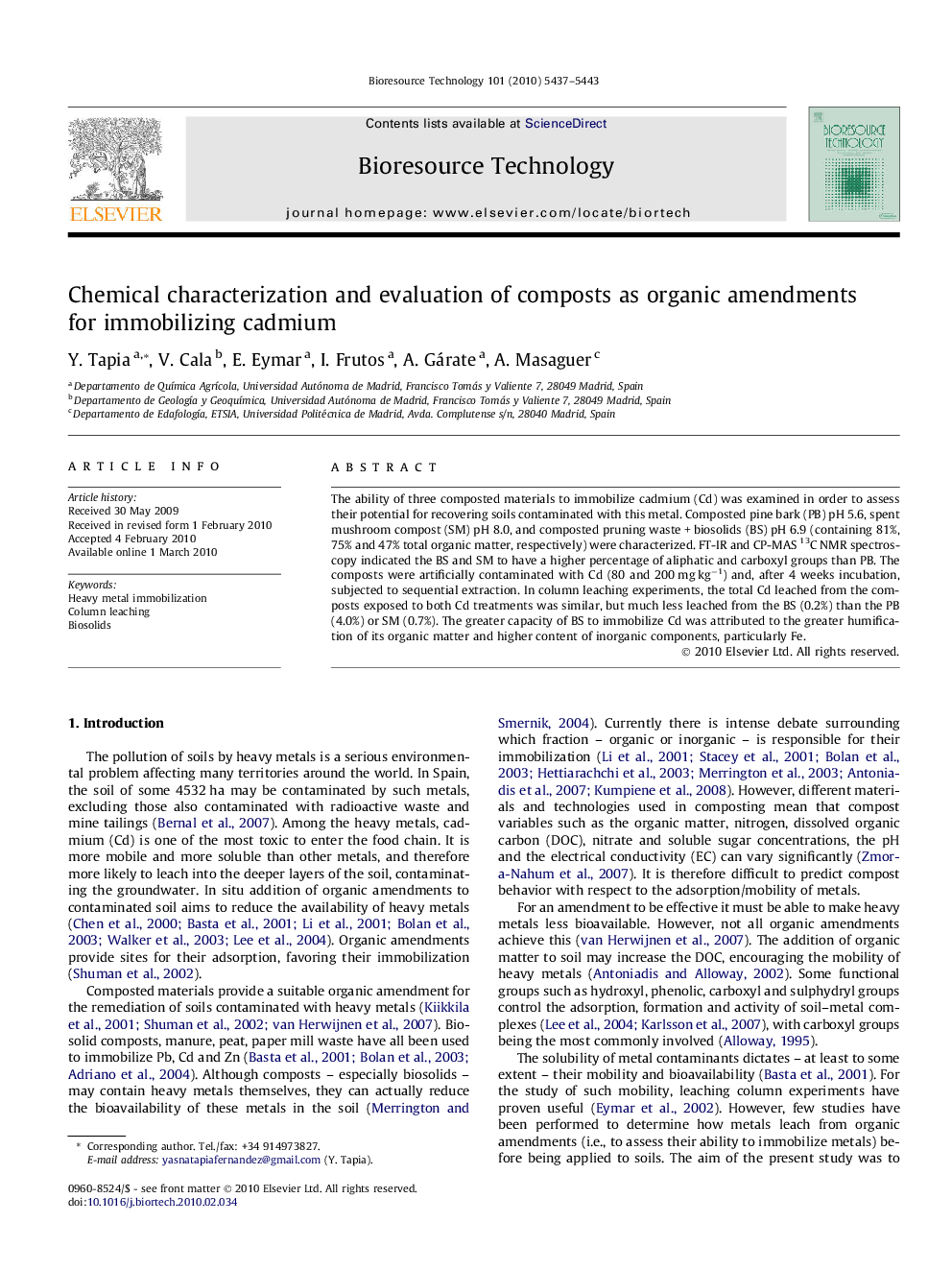| Article ID | Journal | Published Year | Pages | File Type |
|---|---|---|---|---|
| 682975 | Bioresource Technology | 2010 | 7 Pages |
The ability of three composted materials to immobilize cadmium (Cd) was examined in order to assess their potential for recovering soils contaminated with this metal. Composted pine bark (PB) pH 5.6, spent mushroom compost (SM) pH 8.0, and composted pruning waste + biosolids (BS) pH 6.9 (containing 81%, 75% and 47% total organic matter, respectively) were characterized. FT-IR and CP-MAS 13C NMR spectroscopy indicated the BS and SM to have a higher percentage of aliphatic and carboxyl groups than PB. The composts were artificially contaminated with Cd (80 and 200 mg kg−1) and, after 4 weeks incubation, subjected to sequential extraction. In column leaching experiments, the total Cd leached from the composts exposed to both Cd treatments was similar, but much less leached from the BS (0.2%) than the PB (4.0%) or SM (0.7%). The greater capacity of BS to immobilize Cd was attributed to the greater humification of its organic matter and higher content of inorganic components, particularly Fe.
